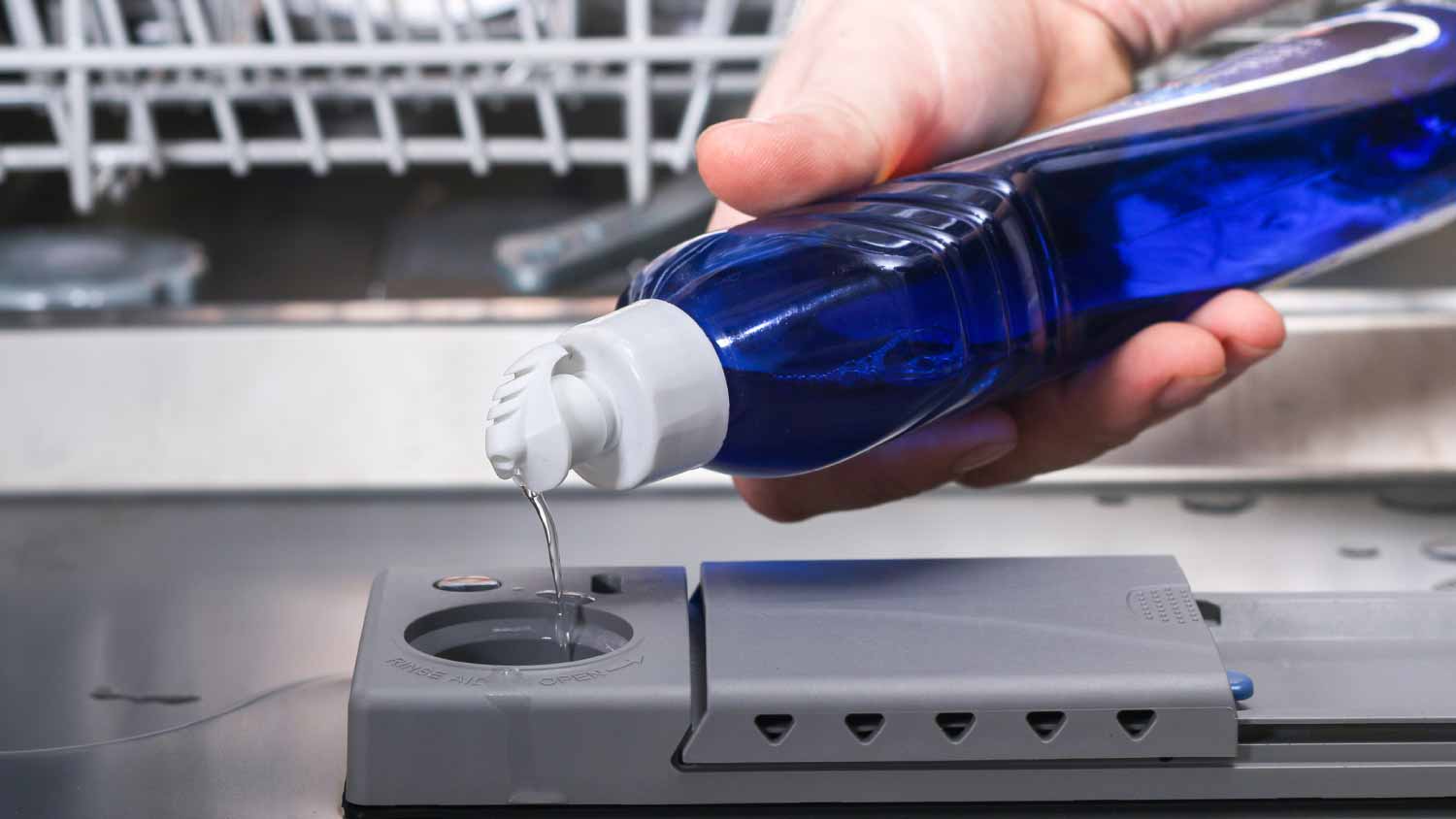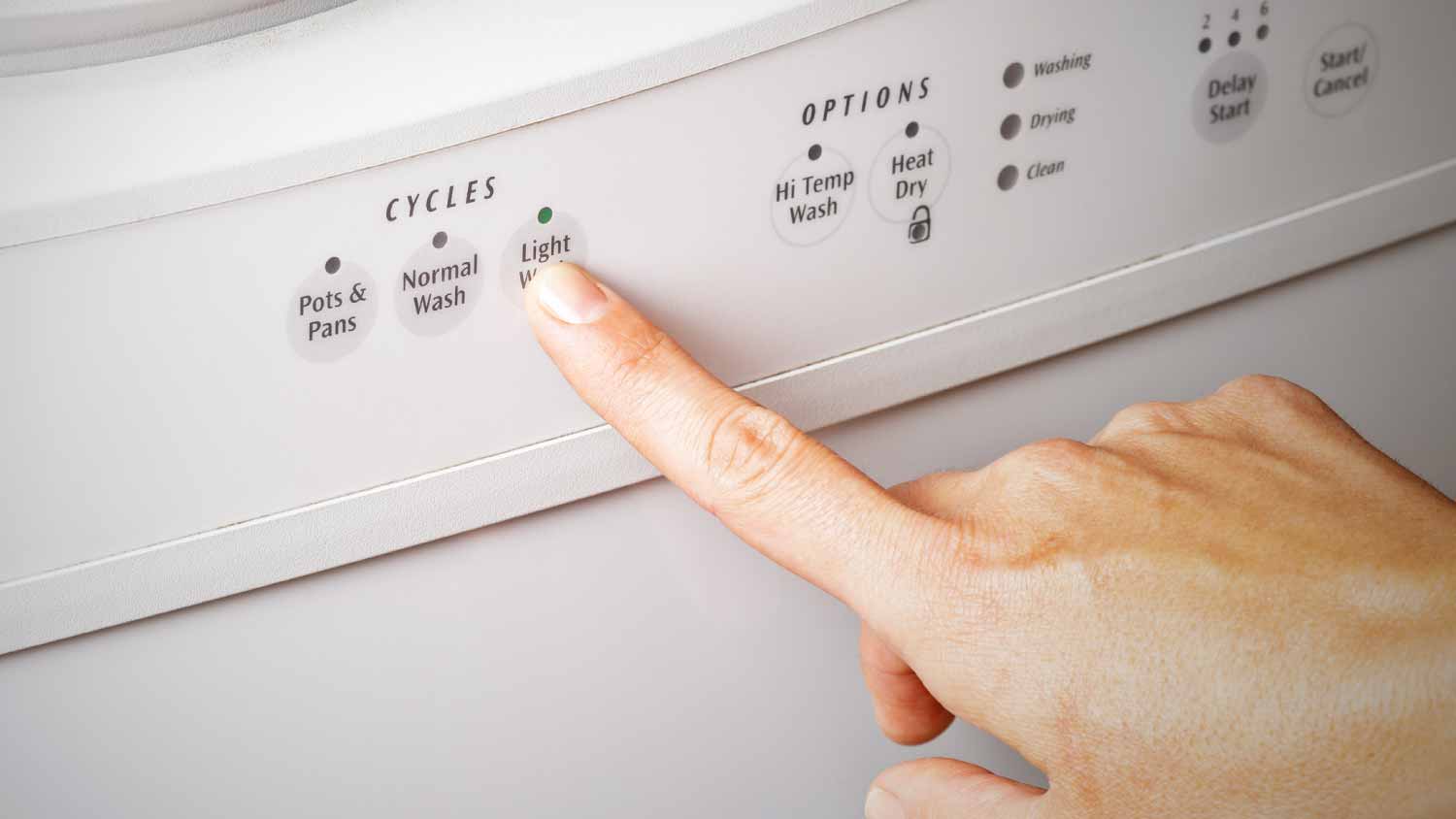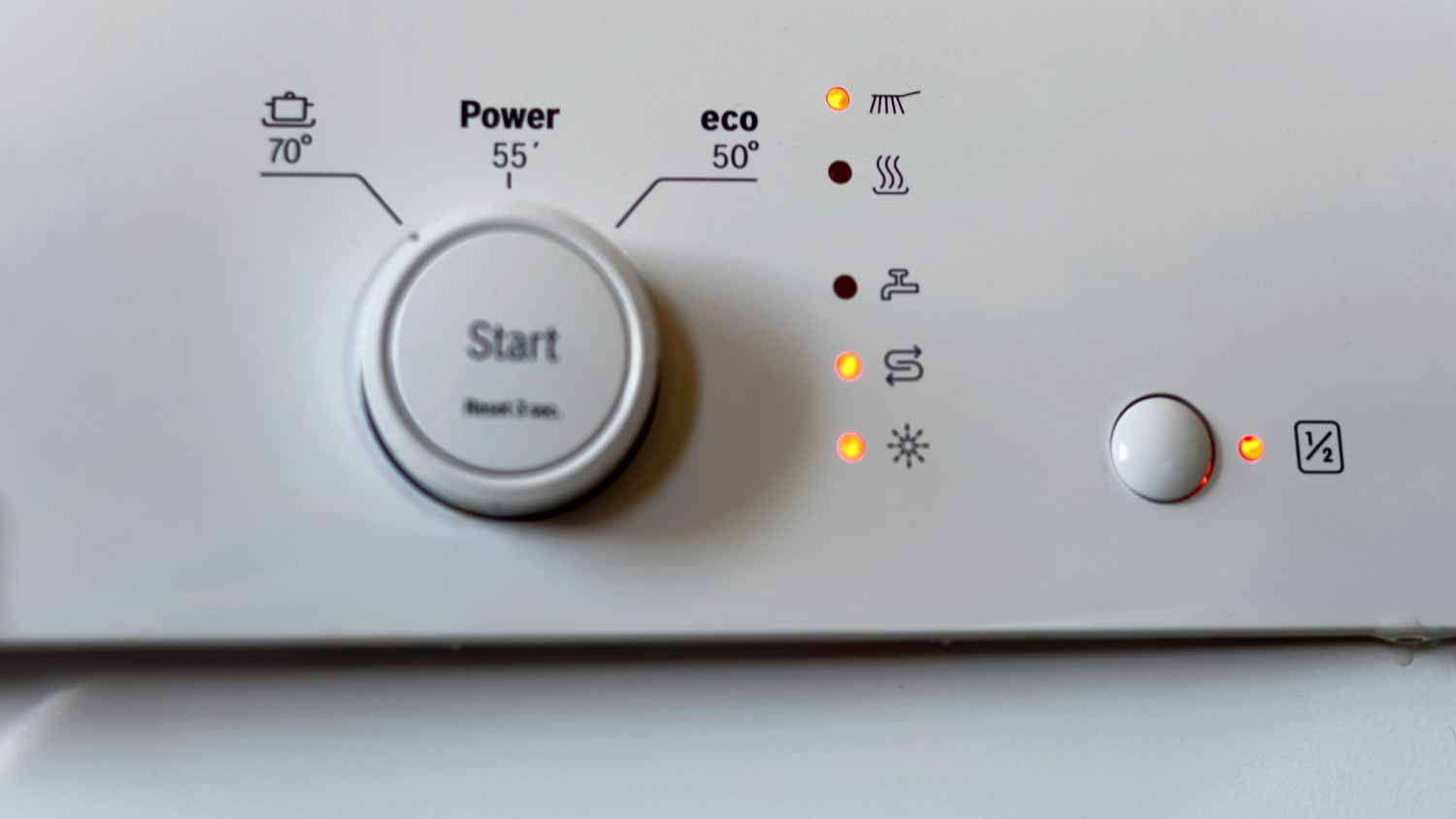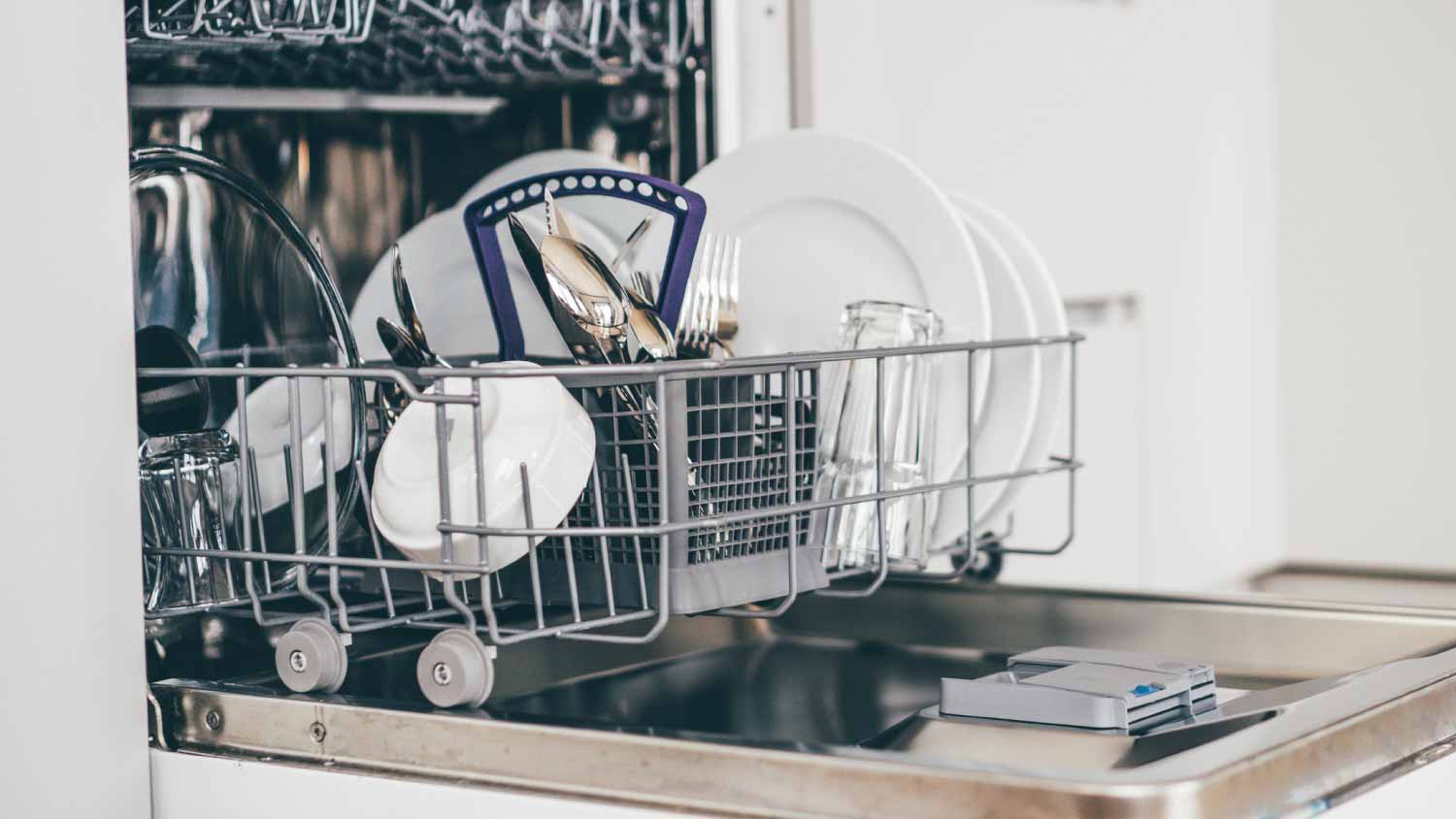
Garbage disposal repair costs depend on the specific issue, but you can save money if you DIY. Read on to learn which problems you can fix yourself and which require a professional.
Dry, spotless dishes are on the horizon


Try simple fixes like adding a rinse aid or loading your dishwasher more efficiently.
Replacing damaged or worn-out parts can improve drying.
Learn your dishwasher's cycle selections to get the best clean each time.
Dishwasher repairs cost between $160 and $300.
Dishwashers make your life easier. But it's frustrating when they only do half the job—clean your dishes but not dry them. If your dishwasher's not drying properly, there are a few tests you can do to figure out why. Learn the eight most common reasons your dishwasher isn't drying—and how to fix the issue.
If you don't load the dishwasher correctly, your dishes can block the spray arms and prevent proper rinsing. The result? Too much water collects in certain areas of your load. Also, if you place dishes too close together, it'll restrict the air circulation inside. This lack of airflow makes it hard for the hot air to evaporate water, leaving dishes wet at the end of the cycle.
Here's how to properly load your dishes: Place larger items like pots and pans on the bottom rack, avoiding getting in the way of the spray arms. Position plates and bowls facing inward and slightly angled for optimal water flow. Use the top rack for cups, glasses, and other smaller items. Keep them spaced apart just a little, and avoid the temptation to overstack.

Rinse aid reduces water's surface tension so it can easily sheet off dishes. Without it, water droplets cling to dishes, leading to spotting and longer drying times. This is a problem for plastic items, in particular, because they tend to dry more slowly.
If you suspect you need more rinse aid to help your dishwasher do its job, give it a try. Most dishwashers have an adjustable setting for the amount of rinse aid dispensed per cycle. You may need to increase the setting if your home has hard water.
For best results, use a high-quality rinse aid and check the dispenser regularly for clogs or damage.
The heating element raises the dishwasher’s internal temperature during the drying cycle to evaporate the water on your dishes. If it malfunctions, your dishes won’t dry properly.
You can check your heating element for visible damage. If you don’t see any, it's best to hire a professional who fixes dishwashers. A local dishwasher repair service can test to see if your heating element needs replacing.

Dishwasher cycles are each designed with specific functions and temperatures. For example, eco-friendly or quick-wash cycles often use lower temperatures and shorter drying times to conserve energy and water. The downside is that your dishes may not get dry enough. Some cycles actually skip the drying phase altogether.
This is an easy fix—choose a cycle that includes a drying phase and runs at higher temperatures. Your washing machine’s manual explains the cycle types, but those labeled "Heavy Duty," "Normal," or those with a "Heated Dry" option dry the best.
The dishwasher vent releases hot, moist air during the drying cycle. If it’s blocked, the humid air can’t escape and your dishes will remain wet—and they’ll smell musty.
Look for your vent on the top or side of the dishwasher door. Inspect it for a buildup of food particles, grease, or debris. If you spot any clogs, clean the vent carefully with a soft brush or cloth. If cleaning doesn’t help, it likely needs to be repaired or replaced.

The thermostat is one of the parts of a dishwasher that regulates the air and water temperature. A malfunctioning thermostat causes insufficient heating during the drying phase, leaving your dishes damp.
You can test the thermostat with a multimeter to check for continuity. If there’s a lack of continuity, you’ll have to have a pro replace the thermostat.
The door seal, or gasket, keeps the dishwasher airtight while it runs. If the seal is damaged, worn out, or unaligned, hot air can escape and cool air can enter during the drying cycle. This doesn’t bode well for your wet dishes.
Inspect the door seal for damage, such as cracks, tears, or other signs of wear. Clean the seal and the area around it to remove debris. If the seal is damaged, you’ll need to replace it.

Outdated technology and worn-out components can cause an old dishwasher to stop drying well. Older models lack advanced drying features, like improved heating elements, venting systems, and insulation. Plus, as time goes on, its components deteriorate and lead to problems.
Before you run out to invest in a new appliance, perform maintenance on your old dishwasher. Check and replace worn-out parts like the heating element, door seal, and thermostat to ensure they’re in good condition. If you want to make a small fix, dishwasher repair costs range between $160 and $300.
If these fixes don't significantly improve drying, it's time to consider investing in a new dishwasher. The average dishwasher installation cost, which includes the cost of the unit and installation fees, ranges between $1,000 and $1,500. Replacing an old dishwasher with a new model leads to better performance, energy savings, and overall convenience.
From average costs to expert advice, get all the answers you need to get your job done.

Garbage disposal repair costs depend on the specific issue, but you can save money if you DIY. Read on to learn which problems you can fix yourself and which require a professional.

Broken glass stove tops are not only unsightly; they can also be dangerous. Use this guide to learn how much glass stove top replacements cost based on factors like size and type.

Garbage disposals last five to 10 years, and replacement is preferred over repairs. Here’s everything you need to know about replacing your garbage disposal.

Looking to extend the life and increase the efficiency of your dishwasher? Learn how to clean a dishwasher drain to enjoy a clean, dry load every time.

How do wood stove fans work, and why do you need one? Learn how to boost your home’s heating efficiency with our comprehensive guide.

Is your washing machine not draining? This is often an easy problem to fix. Keep reading to learn how to drain a washing machine.